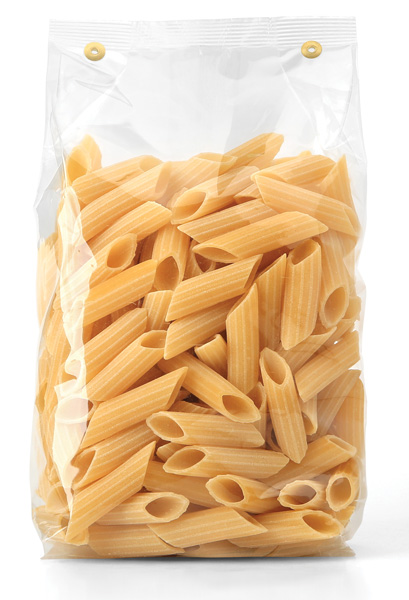Take a Second Look at Pathogens in Cereal Flours
Safety & Quality | APPLIED SCIENCE
Because of their low water activity (aw), wheat and other cereal flours traditionally have been viewed as antagonistic to the survival of pathogens such as Salmonella and enterohemorrhagic Escherichia coli (EHEC). But recent illness outbreaks from raw flour and flour products in the United States and Canada have forced a reexamination of these ingredients’ safety. “We need to remember that flours are not ready-to-eat [RTE] foods,” says Fereidoun Forghani, research scientist and consultant for IEH Laboratories.
Foodborne disease outbreaks from cereal flours may occur after consumers taste raw baked goods mixes and batters, as they often do. In 2009, ready-to-bake cookie dough was identified as the culprit in the first reported EHEC outbreak associated with wheat flour in the United States. Other EHEC serogroups, O26 and O121, were implicated in a 2016 multistate outbreak associated with raw flour consumption involving 56 people across 24 states. Cake mixes were identified in 2018 and were again suspect in 2021 as the source of new U.S. EHEC outbreaks. Due to the long shelf lives of these mixes, outbreaks can extend for many months.
After the 2009 cookie dough EHEC outbreak, the Centers for Disease Control and Prevention (CDC) suggested to manufacturers that they reformulate or further process prepackaged cookie dough to be as safe as an RTE food, and recommended they communicate to consumers more effectively about the risks of eating unbaked cookie dough. Research published in 2021, however, found that despite educational materials provided by CDC and the flour industry, most consumers were unaware that raw dough or batter may cause foodborne illnesses (Feng and Archila-Godínez 2021). Most were also ignorant of flour or flour product recalls, and more than half of the survey participants admitted they consumed raw dough or batter.
Pathogen Survival in Wheat
Both EHEC and Salmonella can cause illness with very low oral doses, so delivering infection to consumers doesn’t require growth in a food substrate—only survival of a few pathogenic organisms.
While both EHEC and Salmonella can survive for extended periods of time in wheat flour, EHEC was found to be more heat sensitive than Salmonella (Forghani et al. 2019). Researchers discovered that EHEC serogroups O26, O103, O111, and O157 could survive for more than 9 mo in wheat flour stored at 23°C (Forghani et al. 2018). EHEC O121 taken from naturally contaminated wheat flour (aw <0.5) that was implicated in an October 2016 Canadian outbreak survived 2 yr of storage (Gill et al. 2020). Additionally, no significant decline in EHEC O121 viability was seen between 6 mo and 2 yr of storage. The Center for Food Safety at University of Georgia suggested that thermal inactivation at 65°C for 30 min or storage at 35°C for 2 mo may mitigate the risk of most EHEC serovars in wheat flour (Forghani et al. 2018).
Occurrence and Detection
Since the microbiological quality of cereal grains is a major contributor to flour safety, Kansas State University researchers recently evaluated culture-based and molecular tests for detection of seven EHEC serogroups: O26, O45, O103, O111, O121, O145, and O157 (Remfry et al. 2021). They collected 625 wheat grain samples from different U.S. regions and enriched the samples in modified buffered peptone water with pyruvate (mBPWp) or Escherichia coli (EC) broth to detect and isolate the seven EHEC. They also used polymerase chain reaction (PCR) and further culture-based methods to detect and isolate the EHEC.
Enrichment in EC broth yielded more samples that were positive for Shiga toxin (virulence) genes and EHEC serogroups than mBPWp did. Only O26, O45, O103, and O157 serogroups were isolated, but none of these isolates were positive for the Shiga toxin genes, and researchers concluded that the prevalence of EHEC serogroups and virulence genes in U.S. wheat grains was low.
A lab surveying EHEC in flour in Germany between 2014 and 2017, however, found frequent presence of EHEC (Mäde et al. 2017). In the Germany study, wheat and rye flours were enriched in buffered peptone water and tryptone bile X-glucuronide agar, followed by multiplex qPCR. Researchers found that 39% of the samples were positive by qPCR. EHEC also was isolated from 19% of the samples.
The differences between the Germany and U.S. studies are many, but it’s possible that cross-contamination from grain processing equipment may account for the wide variation in detection between whole unprocessed grains and milled flours.
Other food scientists have found low concentrations of pathogens on raw wheat kernel surfaces (0.110 + 0.448 MPN/g Salmonella cells) despite this agricultural product’s exposure to multiple sources of microbial contamination, including soil, water, insects, and animal feces (Myoda et al. 2019). Culture methods and their efficacy in resuscitation and growth of bacterial cells may also be a factor in some of the differences in pathogen recovery among labs.
In addition, wheat-based foods can be mixed with different ingredients to create pastes and other food matrices that alter the efficiency of pasteurization protocols (Lin et al. 2020). Processing and storing flours and flour foods also creates environmental stressors that could cause pathogens to enter a viable but nonculturable (VBNC) state, resulting in false negatives for culture-based detection of VBNC bacteria. Researchers suggested storage conditions of high acidity (1% v/v acetate) and low temperature (-20°C) to eliminate the formation of S. enterica VBNC cells in flour foods; propidium monoazide pretreatment prior to PCR was able to detect S. enterica VBNC cells down to 105 CFU/ml in an artificially simulated flour food (Li et al. 2020).
Wheat Treatments
Because heat can inactivate pathogens, cooking products that contain flours before eating them can help prevent foodborne illness. A recent study quantifying reduction of Salmonella enterica and pathogenic E. coli in pasta found that common cooking methods were capable of mitigating the microbial food safety risks associated with the foodstuff (de Senna et al. 2021). Elbow noodles cooked by microwave (2.5 min on high setting at 720 W), flat noodles cooked 6 min in boiling water, and lasagna noodles baked for 50 min at 204°C reduced both pathogen levels to <0.5 log MPN/g despite initial inoculation levels at >6.5 log MPN/g. Researchers who inoculated muffins with E. coli O121 (~log 7 CFU/g) in the muffin batter found the pathogen completely eradicated after 21 min of baking at 375°F (190.6°C) and ambient cooling (Michael et al. 2019).
Flour moisture level significantly impacts heat inactivation of EHEC and surrogates. When EHEC and surrogate organisms were inoculated in flour and subjected to heat at 82°C for 5 min, EHEC was reduced by 1.7 and 6.0 log CFU/g at 8% and 13% moisture levels, respectively (Daryaei et al. 2020). Both Enterococcus faecium NRRL-B2354 and E. coli P1 were found to be suitable surrogates for wheat flour process validations.
Before it is ground at a mill, wheat normally is tempered by the addition of 2%–4% water and held overnight, according to Francisco Diez-Gonzalez, professor and director of the Center for Food Safety at the University of Georgia. Researchers have suggested different tempering strategies to reduce the microbial loads on the grains. In a study published in 2021, sodium bisulfate (SBS) was evaluated during tempering of wheat flour to reduce the O121 and O26 loads (Rivera et al. 2021). The addition of 0.5% and 1.5% SBS decreased the levels of these EHEC by 2.0 to >4.0 log, respectively. SBS tempering lowered the pH of the wheat flours to 4.51–4.60 but did not affect functional properties in the dough compared with the control.
A hurdle approach using acidic water (SBS and lactic acid)—alone and in combination with heat treatment—reduced the EHEC load below the detection limit within 6 hr of treatment (Rivera et al. 2021). Wheat flour quality was not affected by this hurdle approach.
Scientists at the Center for Food Safety have been working with organic acids as tempering solutions. “We have had success with the use of pelargonic acid in the tempering process,” says Diez-Gonzalez, citing unpublished results. “Wheat kernels tempered with 4% of a 0.5 M pelargonic acid emulsion reduced the viability of Salmonella and pathogenic E. coli strains by >4 log CFU/g.”
Vacuum steam has been studied as a treatment for decontamination of wheat prior to milling (Snelling et al. 2020). E. coli O121 and Salmonella reductions of 3.6 and 3.2 log CFU/g, respectively, occurred at 65°C. At >75°C processing temperatures, however, the volumes of baked loaves decreased significantly.
Researchers found that atmospheric cold plasma (ACP) treatment could inactivate enteric pathogens such as E. coli and Salmonella and reduce spoilage microbes such as native fungi and psychotropic bacteria, enhancing both safety and quality of wheat grains (Thomas-Popo et al. 2019). But baking characteristics from flour milled from ACP-treated wheat grains were not assessed.
Looking Ahead
Public health investigators need to consider flour as a possible source in outbreaks of not only Salmonella but also EHEC. Nontargeted or open-ended questioning should be used when a targeted approach yields no common outbreak source.
More consumer education from different sources is also needed, including social media. This education should provide not only consumption warnings but recommendations for hand-washing and kitchen surface cleaning and sanitation to prevent cross-contamination. Just as they do with meats, consumers need to separate flour from RTE foods and cook flour-containing products thoroughly according to package instructions. Cooking instructions are especially important with microwavable foods, which are vulnerable to pathogen survival due to uneven heating, lack of thermometer use, and differences in amperage among microwave units.
In the meantime, researchers are continuing to evaluate new tempering methods to reduce pathogen survival in these low water activity foods. More data are necessary to determine why there is such a large variation in EHEC detection in flour and wheat grains among labs and whether VBNC bacteria contribute to EHEC outbreaks in flour and flour-containing non-RTE foods.
Learning Objectives
1. Understand food safety risks associated with raw cereal flour consumption.
2. Learn how pathogens are detected in cereal grains.
3. Review treatments to mitigate pathogen risks in wheat grains.
4. Preview new strategies to prevent foodborne illness outbreaks from cereal flours.






